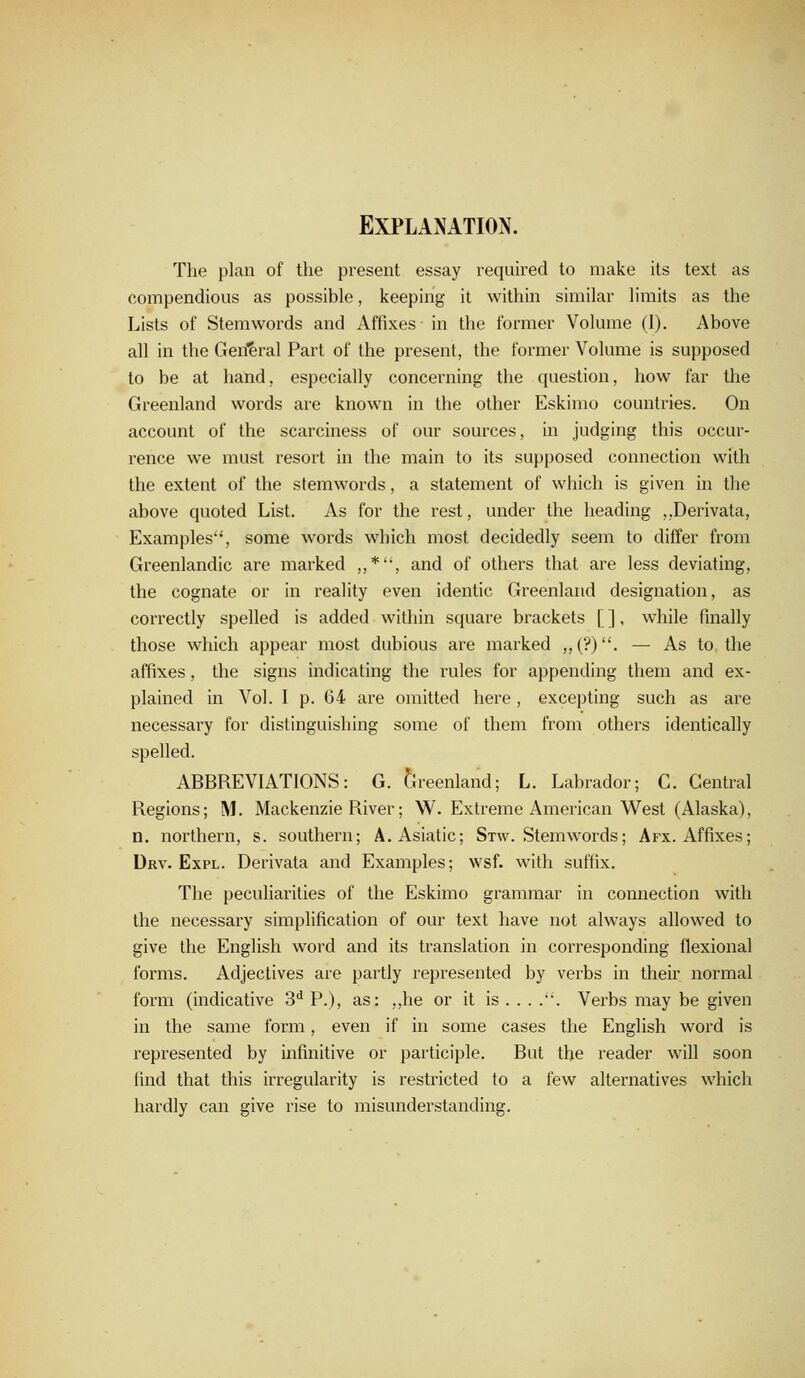
Full resolution (JPEG)
- On this page / på denna sida
- Comparative vocabulary
- Explanation

<< prev. page << föreg. sida << >> nästa sida >> next page >>
Below is the raw OCR text
from the above scanned image.
Do you see an error? Proofread the page now!
Här nedan syns maskintolkade texten från faksimilbilden ovan.
Ser du något fel? Korrekturläs sidan nu!
This page has been proofread at least once.
(diff)
(history)
Denna sida har korrekturlästs minst en gång.
(skillnad)
(historik)
Explanation.
The plan of the present essay required to make its text as
compendious as possible, keeping it within similar limits as the
Lists of Stemwords and Affixes in the former Volume (I). Above
all in the General Part of the present, the former Volume is supposed
to be at hand, especially concerning the question, how far the
Greenland words are known in the other Eskimo countries. On
account of the scarceness of our sources, in judging this
occurrence we must resort in the main to its supposed connection with
the extent of the stemwords, a statement of which is given in the
above quoted List. As for the rest, under the heading „Derivata,
Examples“, some words which most decidedly seem to differ from
Greenlandic are marked „*“, and of others that are less deviating,
the cognate or in reality even identic Greenland designation, as
correctly spelled is added within square brackets [ ], while finally
those which appear most dubious are marked „(?)“. — As to the
affixes, the signs indicating the rules for appending them and
explained in Vol. I p. 64 are omitted here, excepting such as are
necessary for distinguishing some of them from others identically
spelled.
ABBREVIATIONS: G. Greenland; L. Labrador; C. Central
Regions; M. Mackenzie River; W. Extreme American West (Alaska),
n. northern, s. southern; A. Asiatic; Stw. Stemwords; Afx. Affixes;
Drv. Expl. Derivata and Examples; wsf. with suffix.
The peculiarities of the Eskimo grammar in connection with
the necessary simplification of our text have not always allowed to
give the English word and its translation in corresponding flexional
forms. Adjectives are partly represented by verbs in their normal
form (indicative 3d P.), as: „he or it is . . . .“. Verbs may be given
in the same form, even if in some cases the English word is
represented by infinitive or participle. But the reader will soon
find that this irregularity is restricted to a few alternatives which
hardly can give rise to misunderstanding.
<< prev. page << föreg. sida << >> nästa sida >> next page >>
Project Runeberg, Wed Apr 17 00:06:03 2024
(aronsson)
(diff)
(history)
(download)
<< Previous
Next >>
https://runeberg.org/eskimotrib/0228.html



